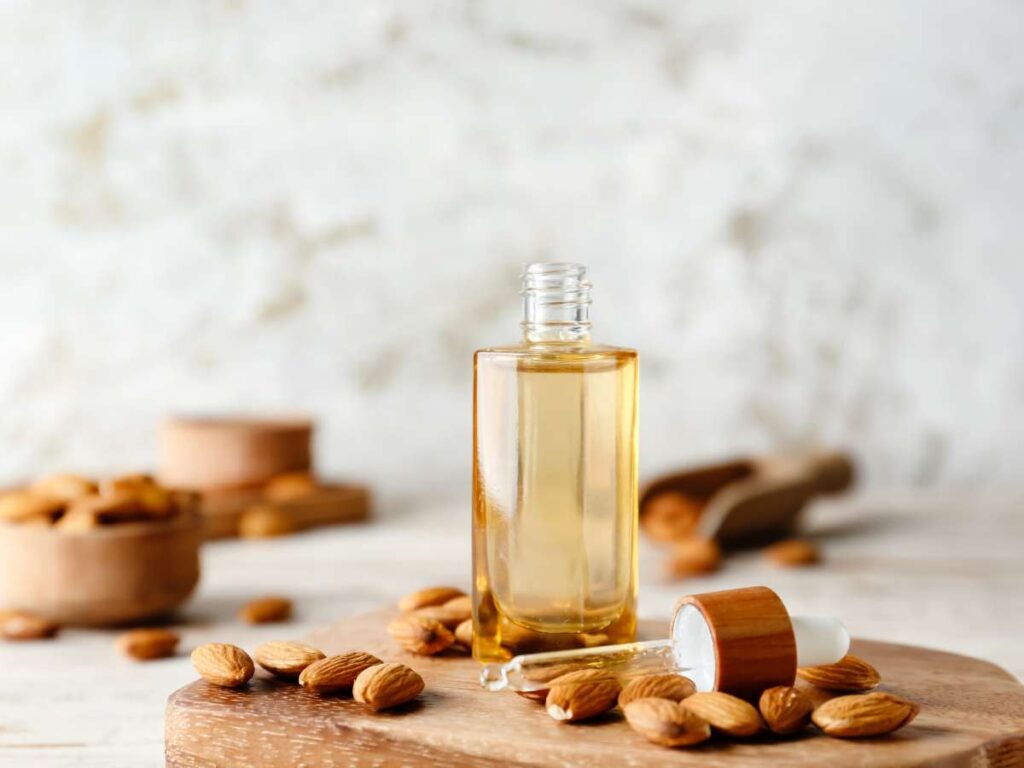Body Oil vs Massage Oil: What’s the Difference?

Author: Tommy Tang | Founder at Ridgepole
Hi, I'm Tommy Tang, here to share my expertise in skincare with you.
Table of Contents
I remember the first time I encountered the confusion between body oil and massage oil. I was testing products for a spa business, thinking I had everything under control—until I noticed the oil felt too greasy and wasn’t absorbing well.
That’s when I realized I had been using body oil instead of massage oil.
This experience opened my eyes to a common mistake that many businesses make. While body oil and massage oil might look similar, they are formulated for entirely different purposes—and using the wrong one can impact the quality of your services and client satisfaction.
Since then, I’ve taken a deep dive into the industry—researching product formulations, testing top brands, and consulting with spa professionals.
In this article, you’ll find a side-by-side comparison of body oil and massage oil, practical use cases, and expert tips to help you make informed choices for your business.
Let’s get started!
1. What is Body Oil?
I’ve always found body oil to be a step up from lotions when it comes to hydration. Unlike water-based moisturizers, which evaporate quickly, body oils create a protective layer that locks in moisture and keeps skin feeling soft for hours.
What’s Inside Body Oil?
The most effective body oils use fast-absorbing, nutrient-rich plant oils that nourish the skin without leaving a greasy residue. Some of the most common ones include:
Carrier Oils (Base Oils)
These form the bulk of the body oil and provide moisture, nourishment, and skin benefits. Common options include:
- Argan Oil – Rich in antioxidants and fatty acids for anti-aging benefits.
- Olive Oil – Deeply moisturizing but slightly heavier on the skin.
- Avocado Oil – Ideal for dry or mature skin due to its richness in vitamins.
- Grapeseed Oil – Light, fast-absorbing, and rich in antioxidants.
Active Ingredients (For Skin Benefits)
Many body oils contain extra ingredients to enhance skin health:
- Vitamin E – Acts as an antioxidant and natural preservative.
- Squalane – Hydrates and locks in moisture without greasiness.
- Ceramides – Help restore the skin barrier and retain moisture.
- Coenzyme Q10 – Fights free radicals and promotes skin elasticity.
Fragrance Oils (Optional)
Some brands add synthetic or natural fragrance oils for a luxurious scent.
Preservatives (In Some Formulations)
If body oil contains water-based ingredients, preservatives like phenoxyethanol or sodium benzoate may be included to prevent bacteria and mold.
Benefits of Body Oil
If you’re in the beauty industry, body oils can be a highly profitable addition to your product lineup. Customers today are looking for natural, effective, and multi-functional skincare solutions, and body oils check all the boxes. Here are some of the key benefits you can highlight when promoting body oils to your customers.
Long-Lasting Hydration Without Heavy Residue
Unlike traditional lotions, body oils penetrate deeper into the skin and create a protective barrier to lock in moisture for hours. Many consumers prefer oils because they provide intense hydration without the sticky or greasy feel of creams.
Anti-Aging and Skin Firming Properties
Customers looking for youthful, glowing skin will love body oils infused with anti-aging ingredients like vitamin E, rosehip oil, and coenzyme Q10. These ingredients boost collagen production, improve elasticity, and reduce fine lines, making body oil a powerful solution for those concerned with premature aging.
Natural Remedy for Dry and Irritated Skin
If your audience includes customers with eczema, dry patches, or sensitive skin, body oils offer a natural alternative to chemical-laden moisturizers. Oils like jojoba, coconut, and almond oil help soothe irritation, reduce redness, and restore the skin’s natural barrier—perfect for customers looking for clean, non-toxic skincare options.

2. What is Massage Oil?
When I started researching with massage oils, I realized their main purpose isn’t hydration—it’s glide. A good massage oil allows hands to move effortlessly over the skin, reducing friction and enhancing relaxation. Unlike body oils, which absorb quickly, massage oils stay on the surface longer, creating a silky, smooth texture for extended use.
What’s Inside Massage Oil?
Massage oils are formulated with carrier oils that provide long-lasting lubrication. Some of the most commonly used include:
Carrier Oils (Base Oils)
These make up the majority of massage oils and provide moisturizing properties. Common carrier oils include:
- Sweet Almond Oil – Lightweight, non-greasy, and rich in Vitamin E.
- Jojoba Oil – Closely resembles skin’s natural sebum, great for sensitive skin.
- Coconut Oil (Fractionated) – Non-greasy, absorbs well, and has antibacterial properties.
- Grapeseed Oil – lightweight, odorless, and good for all skin types.
- Olive Oil – hydrating but can be heavier on the skin.
- Avocado Oil – Rich and deeply moisturizing, ideal for dry skin.
Essential Oils (For Aroma & Benefits)
Essential oils provide fragrance and therapeutic effects, such as relaxation, muscle relief, or stress reduction. Common ones include:
- Lavender – Calming and anti-inflammatory.
- Peppermint – Cooling and muscle-soothing.
- Eucalyptus – Invigorating and clears congestion.
- Tea Tree – Antimicrobial and cleansing.
- Chamomile – Soothing for sensitive skin.
- Rosemary – Improves circulation and reduces muscle tension.
Additives (Optional)
Some massage oils contain extra ingredients for additional benefits:
- Vitamin E – Acts as a natural preservative and skin nourisher.
- Herbal Extracts – Aloe vera, calendula, or arnica for added skin-soothing effects.
- Fragrance Oils – Synthetic or natural for enhanced aroma.
- Emollients – Help improve skin absorption and glide (squalane or shea butter).
Benefits of Massage Oil
Customers are actively seeking relaxation, stress relief, and therapeutic skincare solutions, making massage oil an essential addition to your product offerings. Here are some of the key benefits you can highlight:
Improves Circulation
Regular use of massage oil during body treatments helps stimulate blood flow and improve circulation, which is beneficial for detoxification and reducing swelling. Oils like grapeseed and sunflower oil work well for lymphatic massages, making them ideal for spa detox treatments and wellness therapies. Highlighting these benefits can position massage oil as a therapeutic and holistic wellness product.
Offers Aromatherapy Benefits
Many massage oils are infused with essential oils that promote mental clarity, relaxation, and emotional balance. Citrus-infused oils (e.g., orange, bergamot, and lemon) provide an uplifting and energizing effect, while sandalwood and frankincense offer grounding benefits. Promoting massage oils as part of an aromatherapy experience increases their appeal in both professional and retail markets.
Deep Hydration
Unlike water-based lotions that evaporate quickly, massage oils provide long-lasting hydration while sealing in moisture. Oils rich in jojoba, almond, or coconut oil deeply penetrate the skin, making it soft, supple, and radiant. Customers looking for moisturization with added therapeutic benefits will find massage oil a superior choice over regular lotions.
3. Key Differences Between Body Oil and Massage Oil
Now that we already know both sides, it’s time to see how body oil and massage oil truly compare. While they may share some ingredients, their textures, benefits, and uses are designed for different experiences. Let’s break down their key differences to help you choose the right one for your business needs:
| Feature | Body Oil | Massage Oil |
| Purpose | Hydrates and nourishes skin for daily use. | Provides glide for massages and relaxes muscles. |
| Texture & Consistency | Lightweight, absorbs quickly into the skin. | Thicker, stays on the skin longer for smooth strokes. |
| Absorption Rate | Fast-absorbing, leaves a soft, non-greasy finish. | Slow-absorbing to maintain slip during massage. |
| Common Ingredients | Jojoba oil, coconut oil, almond oil, argan oil. | Grapeseed oil, sweet almond oil, jojoba oil, essential oils. |
| Primary Benefits | Deep hydration, softens skin, improves elasticity. | Reduces friction, relaxes muscles, nourishes skin. |
| Scent | Often light or unscented for daily wear. | Frequently includes essential oils for aromatherapy. |
| Best For | Daily skin care, moisturizing, and after-shower use. | Professional or home massages, muscle recovery, and aromatherapy. |
| Residue | Little to no residue; absorbs fully into skin. | May leave a slight residue for continued glide. |
4. Tips for Choosing the Right Oil for Your Needs
Still feeling stuck between body oil and massage oil? The right choice depends on the skin goals, and how it plan to use it for your client needs. Here are some essential tips:
Tip #1 Define Your Business Purpose and Target Market
- If your business is focused on spas, wellness centers, physical therapy, or professional massage treatments, then massage oil is the best choice. These oils are designed to provide a smooth glide, enhance relaxation, and relieve muscle tension.
- If you cater to the skincare, beauty, cosmetics, or personal care industry, body oils are a better fit. They are lightweight, fast-absorbing, and designed for daily hydration, anti-aging, and multi-use skincare applications.
Tip #2 Consider the Texture and Absorption Rate
- Massage oils are formulated to provide longer slip and glide, making it easier for massage therapists to work on the skin without needing frequent reapplication. They tend to be thicker and richer to reduce friction.
- Body oils are typically lightweight and fast-absorbing, designed to moisturize the skin without feeling greasy. Many body oils are “dry oils,” meaning they absorb quickly and leave no residue.
Tip #3 Identify Key Benefits Your Customers Want
- Massage oils should focus on muscle relaxation, stress relief, and deep tissue penetration. Adding essential oils like eucalyptus, lavender, or peppermint can enhance aromatherapy benefits.
- Body oils should be marketed for hydration, anti-aging, skin repair, and glow enhancement. Ingredients like vitamin E, rosehip oil, and antioxidants support these benefits.
Conclusion
Choosing between body oil and massage oil shouldn’t be confusing. Body oil hydrates skin daily, while massage oil enhances relaxation with a smoother glide.
The real challenge? Finding high-quality, skin-loving oils that meet your business needs.
That’s where Ridgepole steps in. Our expertly crafted oils nourish, protect, and transform your customers skin and body care routine.
Why settle for anything less than the best?
Contact us today, and let’s find the perfect oil for you!
Explore More of Our Resources
There’s so much more to discover! Check out our other products and find what fits your needs:
Still haven’t found what you’re looking for? Don’t hesitate to contact us. We’re available around the clock to assist you.
Quick Quote
Own Your Private Label Cosmetic Line Is No Longer Difficult Here!





